Flue gas cleaning / Process gas cleaning
Incineration of wastes releases pollutants, which are often found in flue gas. CTU Clean Technology Universe AG (CTU) offers ecological and economical gas cleaning solutions for:
- Municipal solid waste incineration plants
- Hazardous waste incineration plants
- RDF (refuse derived fuel) power plants
- Pyrolysis plants
- Gasification plant
The right technology for each application
In follow, the most important systems which are used by CTU, will presented.
Multi-stage flue gas scrubbing
Main purpose is the safe separation of inorganic components and aerosols from the flue gas with quench, acid and neutral stages. The process is characterized by low energy input, durability and high operational reliability.
CTU technology prevents the formation of aerosols thereby avoiding an elaborate and expensive additional stage. Additional systems, such as wet electrostatic precipitator or a ring-jet stage may be implemented on demand.
The elimination of very fine particulates (PM10) is assured by using structured packing and formation by avoiding the use of spray nozzles for distribution of scrubbing liquid in the scrubber. CTU also uses flue gas scrubbers successfully for sewage sludge and for industrial waste incineration plants.
Catalytic and non-catalytic DeNOx processes
If a combustion process allows the use of a non-catalytic DeNOx process (SNCR), CTU provides a proven, highly flexible solution for injecting the reducing agent. The nozzles are steered and tracked carefully to achieve optimum performance.
For the catalytic (SCR) DeNOx and DeDiox CTU uses a honeycomb catalyst and has had success with both raw and clean gas configurations.
Dry and semi-dry processes
Dry and semi dry processes are ideal when the unit is to be kept free from liquid effluents. CTU provides this technology for eliminating fly ash, dust, acidic flue gas components, aerosols and PCDD/F.
Various adsorbents such as Hydrated lime, sodium bicarbonate or mixtures of activated carbon / HFC can be used depending on process conditions.
Technologies in action
CTU constructed the first flue gas cleaning unit - a multi-stage scrubber for industrial waste incinerator - in 1986, in Basel. The unit, designed as an outdoor installation and fitted with fibre reinforced plastic (FRP) scrubber towers, it is still in trouble-free operation until today.
Flue gas scrubbers
Typically, these take the form of a three-stage flue gas scrubber downstream of the dust separation. The flue gas cleaning unit at the Thurgau plant was far ahead of its time in 1996. It was the first Swiss installation to be equipped with a catalyst to eliminate NOx and PCDD/F.
In those days reheating of the flue gases upstream of the catalyst was already realized by flue gas heat recovery across the scrubbers. Elimination of very fine particulates (PM10) is assured by using structured packing and formation by avoiding the use of spray nozzles for distribution of scrubbing liquid in the scrubber.
SCR-DeNOx (raw gas and clean gas)
As a result of positive feedback, many European municipal solid waste incineration plants were equipped with catalytic systems by the end of 1990’s. The tail-end unit was the most popular method.
CTU was already very early on successfully upgrading a number of incineration lines with low-dust SCR-DeNOx units while simultaneously reinforcing the electrostatic precipitator.
Baghouse filters not only polishing filter
CTU offers dry and semi-dry flue gas cleaning with spray dryers, baghouse filters and flue gas scrubbers.
Optimization of units
CTU builds upon the experience of its staff, especially when modifying existing incineration plants. Existing plants can be optimized to the satisfaction of their operators using advanced procedures such as CFD analysis. As a result, the customer gets a secure and efficient operation.
CTU builds upon the experience of its staff, especially when modifying existing incineration plants. Existing plants can be optimized to the satisfaction of their operators using advanced procedures such as CFD analysis. As a result, the customer gets a secure and efficient operation.




